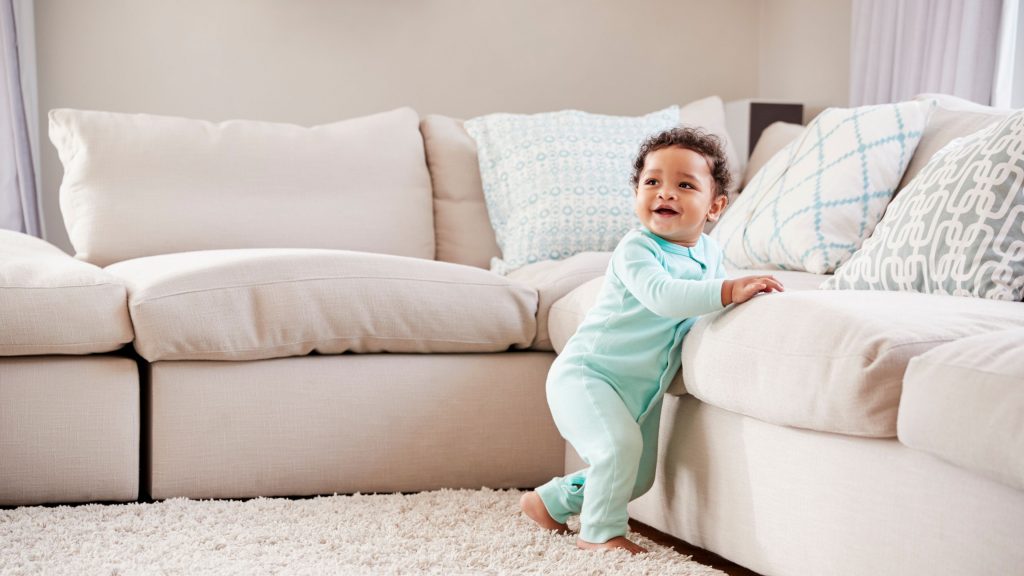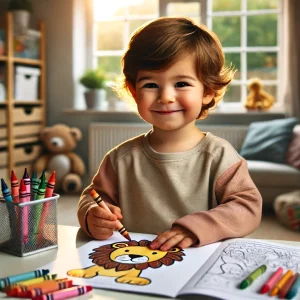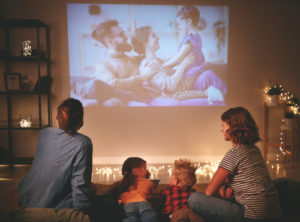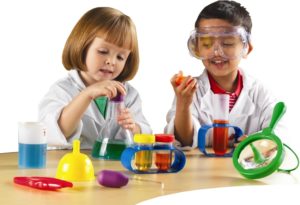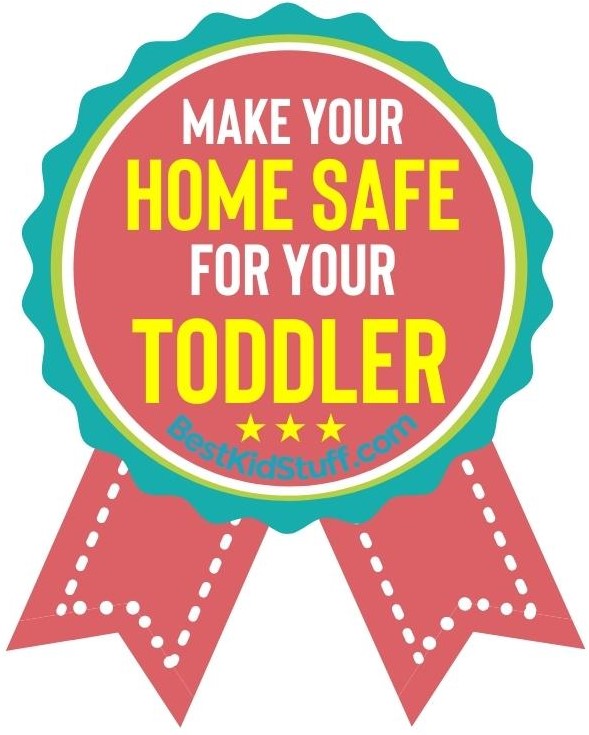
The statistics are sobering and serious! Approximately 2,000 children 14 years old and younger die every year due to home injuries. Many, if not most, of these home injuries are unintentional and preventable, primarily burns and fires, drowning, falls from a height, choking, suffocation, and poisoning. More children are seriously injured for every death and require emergency room visits and hospitalizations.
Even the most conscientious parent will be surprised that many fatal and serious home injuries could have been prevented with a combination of common sense and foresight. Drowning, for instance, is the leading cause of death in children between 1 and 14 years old, and it’s often attributed to large and deep bodies of water. But drowning among children can happen even in as little as an inch of water!
Parents should then go over and above common sense in making their homes safe for their toddlers. While it isn’t possible to watch over your little one 24/7, it’s possible to implement child-friendly safety measures that significantly decrease the risk of unintentional injuries. Here are a few of the safest measures, many of which are affordable and viable over the long term.
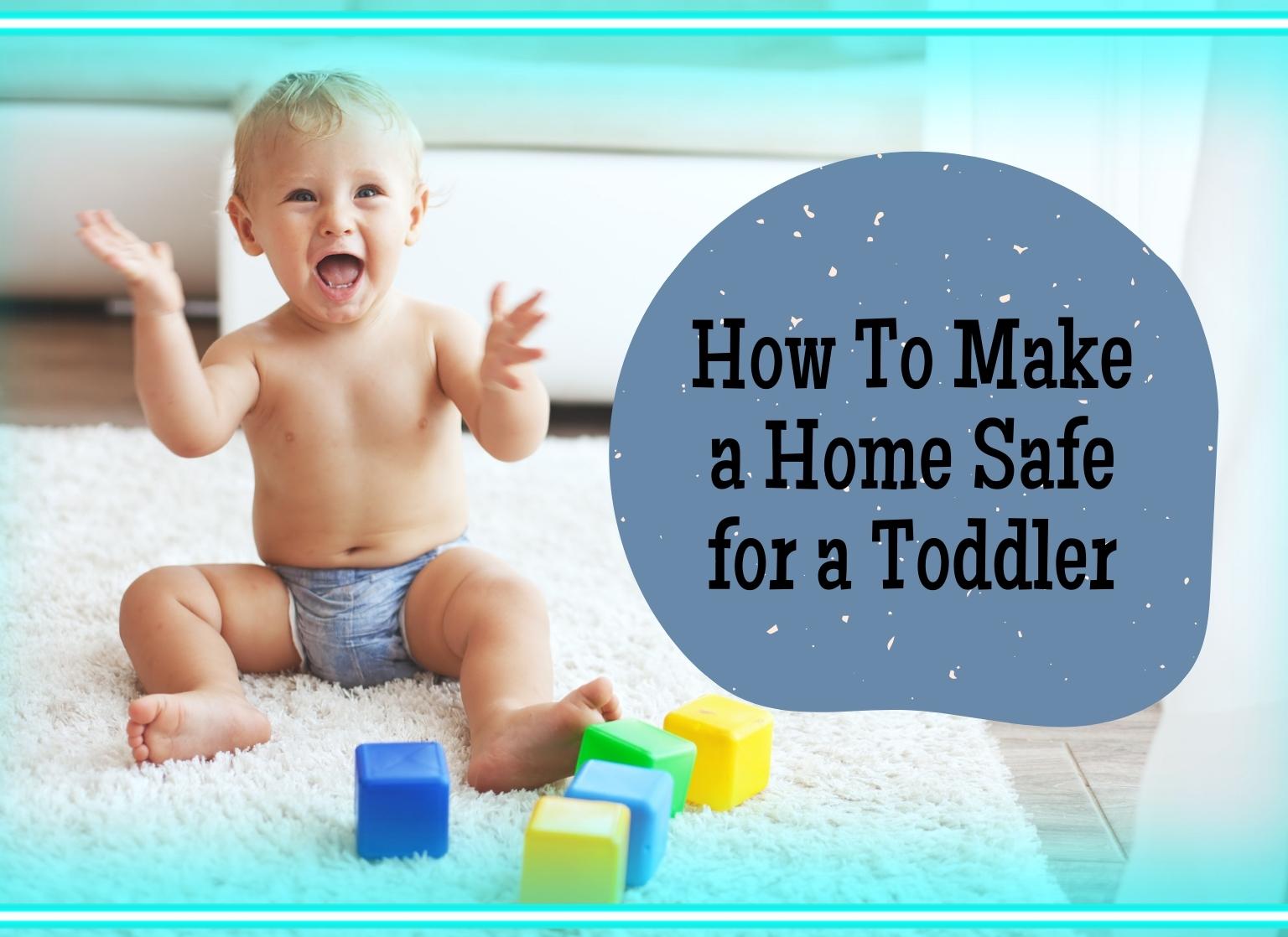
General Safety Measures
When looking for safety hazards, put yourself in your toddler’s shoes but with an adult mindset. Get down on your hands and knees – or kneel– so you are at their height. Look at your surroundings with an observant eye, think about the things that will attract your toddler but pose a safety hazard, and take note of them. You may write down your observations and stick pieces of colored electrical tape to the areas that must be child-proofed ASAP.
The most common safety measures that parents must take note of include:
- Replace highly polished floors, if possible, or place non-slip mats on slippery floors to prevent children from slipping and sliding on them. With toddlers learning to walk and then seemingly running all over the place the next second, these everyday activities can become hazardous for them on slippery floors.
- Arrange the pieces of furniture in a way that will make it difficult for children to climb onto successively higher places. Install grills in windows, too, if you live in high-rise buildings or second-floor windows for safety reasons.
- Put plug protectors over all unused electrical outlets. If possible, put electrical outlets beyond the reach of toddlers. Unplug electrical outlets when these aren’t in use.
- Ask a licensed electrician to install safety switches for an automatic cut-off of power supply and, thus, prevent electrocution.
- Remove electrical cords underneath rugs, carpets, and cords that little hands can pull from height. Cord holders and other organization devices are a must, too, around electrical appliances, including televisions and desktops.
- Avoid keeping firearms in the house. But if you must keep firearms, be sure to lock them and their accessories in a safe and secure place. Store the bullets and guns separately.
- Install smoke alarms in all the levels of your home. Even the basement and attic must have a smoke alarm! Ensure that there’s a smoke alarm, too, outside every bedroom.
- Test the smoke alarms monthly to check their functions. Change their batteries once a year, too, or when the alarms emit chirping sounds. Never disable smoke alarms!
- Install carbon monoxide detectors outside bedrooms and other sleeping areas. These must also be tested once every month and never disabled. Tip: You can also find a combination smoke alarm/carbon monoxide detector.
- Remove small objects that can become a choking hazard for toddlers or lock them in a place out of reach of children. Small toys, balloons and plastic bags are a few examples. Tip: Use a toilet paper tube – if a toy or an object can be pushed through its hole, then said item is a choking hazard.
- Keep flammable materials, particularly lighters and matches, out of children’s reach. Never smoke cigarettes, cigars and vapes inside the home, not only for health reasons (i.e., secondary smoke) but to decrease the risk of fires and burns.
- Use window stops to prevent windows from opening more than four inches, thus, preventing children from climbing out and intruders from easily climbing in. Install windows with openings from the top, if possible, too.
- Install door stoppers and hinge protectors, too, which will prevent your toddler from getting out of the room.
- When these aren’t in use, drain water and other liquids from open containers, such as buckets and bathtubs. Even one inch of water can cause drowning in toddlers!
- Always ensure adult supervision when your children are in or near bodies of water, whether it’s your swimming pool, a garden pond, or the sea. Installing safety devices in your swimming pool and garden ponds, such as fences and hardcover.
- Remove toys and other objects that can cause tripping hazards on stairs and landings. While toddlers can climb up and downstairs, it’s best to make them as safe as possible.
- Install balustrades across balconies and stairs to prevent accidents. Thick carpets on stairs are also an excellent idea.
- Look out for everyday household objects that can cause strangulation and suffocation in children. Plastic bags, ropes, cords, window blinds, packaging materials and even soft toys are a few examples. Toddlers like to play with boxes and cartons, too, so be sure to keep a close eye on them.
- Remove breakable objects from open shelves and keep cabinets closed so toddlers can’t get to them. Heavy items, such as books, figurines and photo frames, should also be kept out of reach of children.
- Install safety devices that prevent open shelves and cabinets from toppling over when toddlers climb upon them. Toddlers are keen on exploring their environment to climb significant heights to satisfy their security, thus, the safety devices.
- Place soft baby bumpers around sharp corners, such as tables, cabinets and chairs. Toddlers can seem like magnets to sharp objects and corners, so it makes sense to decrease their risk of injuries when bumping into them.
- Buy pieces of furniture that cannot be toppled over easily. Wood and metal furniture are usually investment pieces, too, so you get good value for your money while also ensuring your toddler’s safety.
- Store medicines and chemicals out of children’s reach, too, preferably in locked cabinets with child-proof locks. Always clean up after using medicines, chemicals and other substances that can cause poisoning in children. Leaving these things lying around within reach of a toddler, even for a minute, can cause serious poisoning. Over-the-counter and prescription medicines intended for children but taken more than the recommended dose can cause severe overdose reactions, too.
- Store sharp objects, such as scissors, pens, and staplers away from your children’s play area and their inquisitive hands. Kitchen tools, power tools, and manual tools should be kept in their proper places, such as in the kitchen, garage, and shed.
- Check the background of nannies and babysitters, too. Ideally, you should hire them from an agency, but you can always use other vetting measures. You will want a trustworthy and competent caregiver for your toddler.
- Install security cameras in and around your house that you can monitor from your mobile device or computer in real-time. You should tell the nanny or babysitter about their presence.
More importantly, you should ensure that your home security system is up to your exacting standards. While you may live in a safe neighborhood, you want a safe and secure home against the possibility of a home invasion.
Safety Measures for Your Toddler and Pets
A few words about pets are in order, too, when you have toddlers in your home. While your pets are part of your family, you must keep in mind that your children’s health and safety are of paramount importance. It is your job as a guardian or parent to ensure that your toddler is safe while around your pets, and these tips are useful in this regard.
- If possible, choose a dog or cat breed with the right size, energy level and temperament for a family dog. Experts recommend golden retrievers, Labrador Retrievers, Beagles, Cavalier King Charles Spaniel, and Pugs as great breeds for families.
- Ensure adult supervision whenever small children, from infants to toddlers, are around pets, even with longtime, trusted pets. Your pet may not always be in a good mood, for instance, and could cause harm to your toddler.
- Teach your toddler never to approach your pet – or any animal, for that matter – when they are sleeping, eating, chewing on a toy, caring for their babies, or in their crate. Show by example, too, so your toddler will learn by observing and doing.
- Keep your pets’ litter box away from small hands and immediately clean up after their poop and pee. Your toddler may look at your cat’s litter box and think of it as a mini-sandbox! Pet excrement contains germs, worms and other pathogens that can cause disease in humans.
- Teach your children to treat your pets calmly and gently, whether playing or sleeping together. Teasing, hurting, cornering, surprising and scaring your pets shouldn’t be tolerated.
- Wash your hands after handling your pets, including their toys, food and bedding, and teach your toddlers to do the same. While this may seem like OCD behavior, it’s better to be safe than sorry.
Keep your pets healthy, too, through complete shots, a healthy diet and exercise plan, and regular check-ups! With healthy pets, you have one less thing to worry about your toddler getting sick from animal-borne diseases.
Children’s Bedrooms Safety Tips
Toddlers spend more than eight hours of the 24-hour cycle in their bedrooms since these are their sleeping and playing areas. Parents must then ensure that their children’s bedrooms are the safest areas in the home!
- Keep cords for drapes and blinds away from your toddler’s bed and away from their reach. Even a short cord can cause strangulation in a small child. If possible, invest in cordless window blinds since these eliminate the risk of strangulation, and these enhance the no-clutter look, too. If you can’t buy new cordless window blinds, you can still eliminate the safety risk by cutting the loops and placing tassels instead.
- Place your toddler’s bed away from windows. Your toddler can easily escape through a window, not to mention that it would be easy for an intruder to snatch your child through an open one, too.
- Avoid using a bunk bed for a toddler, even if they sleep with an older child in the same bedroom. There’s always the temptation to climb the second-level bed that can result in an accident for a less coordinated toddler.
- Check that your toddler’s bed only has a few pillows and stuffed animals, particularly when sleeping. Just as with infants and their cribs, the fewer safety hazards in bed, the better their safety and restful sleep. Besides, you want as much room for your toddler to move as possible when sleeping.
- Install guards on your toddler’s bedroom windows to prevent the window from opening more than four inches or about the size and height of an adult fist. It is a must for window seats and other windows close to the floor. For casement windows, you may want to remove the crank but keep it in an easily accessible place.
- Never keep balloons in a toddler’s bedroom! You should never keep latex and helium balloons in children’s bedrooms, particularly those under eight years old. As much as 50% of children’s choking deaths were due to balloon ingestion. When a child swallows a popped balloon, it can drape itself over the larynx’s entrance and suffocate them. The balloon acts like a shrink wrap around the larynx entrance, thus, the choking accident.
- Crayons, pencils and pens can be choking hazards, too. Parents must then keep a close eye on their toddlers when they use these items lest they break and put them in their mouths. Tip: Give toddlers round, chubby crayons – the Crayola Tadoodles is highly recommended – for less safety risk.
- Anchor heavy furniture to the floor or the wall to prevent them from toppling over. Dressers, shelves, and even changing tables are the best examples of furniture that must be anchored well and checked for stability. Injuries related to tip-over accidents result in 15,000 emergency room visits among kids every year, a sobering thought when you’re checking furniture.
- If you’re an extra-conscientious parent, you may also want to check for sharp and ragged edges (i.e., splinters), loose hardware (e.g., locks and pulls), and broken parts. Install drawer stops, too, so that toddlers won’t be able to open drawers more than two-thirds of the way.
- Keep piggy banks and coins away from toddlers. Coins have the right size and shape for blocking a child’s airways, resulting in their choking death.
- Buy safe, non-toxic and age-appropriate toys only. Remember that the quality of the toys matters the most, not their quantity! Durable toys are the best since these can withstand regular use, perhaps even tough love, by active toddlers.
- Remove broken and defective toys that can cause injuries, such as choking, puncture wounds and scratches on the skin, from your toddler’s bedroom. Better yet, keep these toys away from their reach. Make a regular inventory, such as once every two weeks, to check your toddler’s toys. Remove toys with leaking batteries and other issues that can cause poisoning.
- Keep your toddler’s toys in durable storage boxes, too, preferably with covers. But choose toy boxes with light covers since you don’t want your toddler to become trapped inside. Better yet, install safety hinges on the toy boxes, which will keep the covers open, or remove the covers completely.
- Minimize electrical appliances in your toddler’s bedroom. There’s no need for a television set or a computer setup because these are not only safety hazards but also harmful for your child’s overall development. Toddlers should have limited screen time lest their cognitive development becomes adversely affected.
- Avoid placing breakable and flammable decorative items in your child’s bedroom for obvious reasons. Glass figurines, lava lamps and tea candles are irresistible temptations for a toddler’s inquisitive mind.
As a parent, you may want your toddler’s bedroom to be a wonderland. But remember that it must be a safe environment first, and only when it’s so that you can add touches of wonderland.
Family Room Safety Tips
Most of your family’s time together will be spent in the living room, and many memorable moments occur here, too, from opening Christmas presents to watching your children take their first walk. But your living room can be a hazardous place for your toddlers, too, whether it’s from heavy or unstable furniture or slippery floors. Note that approximately 17,000 children every year were sent to emergency rooms due to injuries caused by heavy and unstable furniture falling on them.
- Secure your television to the wall, usually with a wall bracket securely tacked to a concrete wall, ensuring that it will not topple over your toddler’s head. The television’s wires and electrical outlet should also be out of reach of children’s hands, and these should be preferably hidden to prevent temptation.
- Bookshelves, dressers and other heavy pieces of furniture should also be secured or fastened to the wall or anchored on the floor. This technique prevents them from toppling over when your toddler climbs on them – and they will!
- Be conscious of the safety hazards posed by knick-knacks on bookshelves, consoles and dressers. Glass, metal and wooden photo frames and figurines, for example, can result in injuries if these fall on children’s heads or become shards on the floor. Replace them with plastic items or mount them on the wall or secure them to the surface.
- Wood coffee tables are a hazard for toddlers because of their low height and sharp corners and because toddlers learning to walk use them for cruising. Your toddler will fall several times when cruising, so there’s a high risk of hitting the coffee table’s hard material and sharp corners. The solution: Use pads around the corners to soften them or change to a round or upholstered coffee table.
- Avoid using glass as toppers for tables and consoles in the living room, particularly low-height furniture. Unsecured glass tops are a safety hazard because they can break if they fall off the table or console. The glass shards will cause injuries when handled or stepped on.
- Remove the strangulation hazards, too, including the cords from window blinds, lamps and appliances. If these cannot be removed, these should be bundled before placing them out of children’s reach. Electrical wires are best bundled, while window cords can be fastened to the wall using brackets.
- Sliding glass doors are an even riskier part of the home because toddlers can run into them, if not break them in the process. You may place stickers on the glass door so that your toddler can see that these are in their way. However, this suggestion may not be recommended if your toddler has a knack for running into things, stickers or none.
- Keep doors either fully closed and locked or fully open so the hinges won’t trap their little hands. Be sure to keep the front door closed and locked, too, since toddlers are keen to explore the environment outside their home.
- Secure table and floor lamps because these can be easily pushed or pulled even by small bodies. You may also secure them with brackets or Velcro straps, even go for built-in lamps on walls.
- Install a safety gate around your living room’s fireplace, if you have one, even when it has a screen. While the screen will prevent embers from getting out and small hands from getting into the fireplace, it can still become extremely hot. The bricks around the fireplace are a safety hazard, too, but the safety gate will be a deterrent.
- Check frequently the undersides of cushions, furniture and even furnishings for small items that your toddler can choke on. Beads, buttons, coins, marbles, balls, and bottle caps can be easily hidden in these places but quickly found by toddlers.
- Houseplants should be kept away out of children’s reach, too. With their oral habits, toddlers are keen to explore things around the house with their sense of taste.
- Secure loose rugs with furniture or Velcro on their underside. Consider removing them if they don’t have a practical function.
- Check the remote controls for missing buttons and battery covers. Replace defective remote controls and ensure that the battery covers are taped in place – electric tape is a good idea. Check that those button batteries are out of children’s reach, too, such as those found in some toys, hearing aids, watches and even greeting cards.
Sometimes, you may miss out on a few safety tips in your living room. As a parent, you will find that every day is a learning opportunity! Adjust and adapt as you go along – and, more often than not, it’s the best that parents can do.
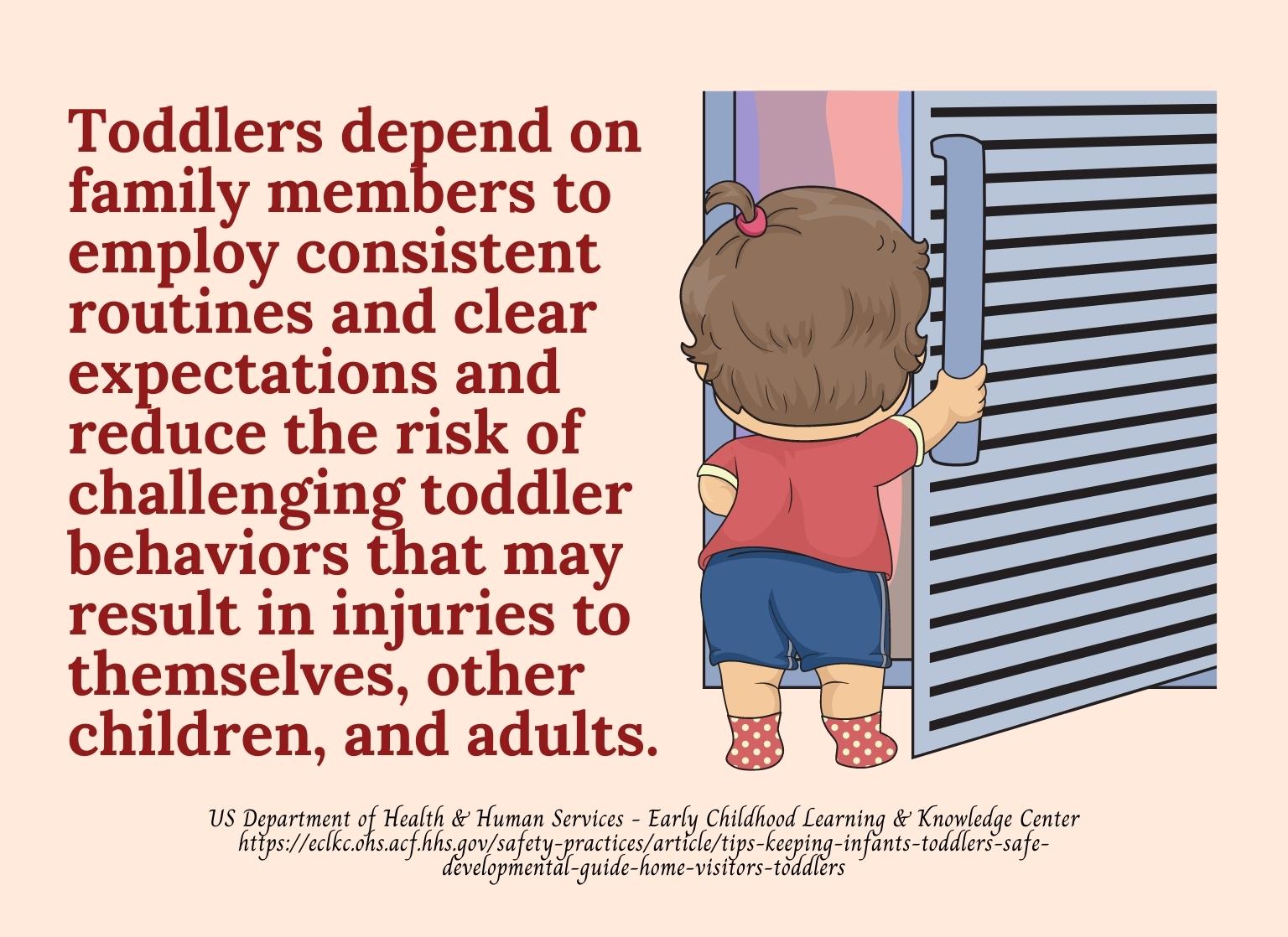
Kitchen Safety Tips
The kitchen has so many safety hazards that you may think about excluding your toddler from any activity in it! But it isn’t easy to do so, considering that your toddler will want to be where the action is, usually near your side. Fortunately, certain steps can be taken to make your kitchen safer for your toddler.
- Sit your toddler in a high chair or allow them to play in a playpen well away from the stove. Be sure that they are securely strapped in their high chair and within your line of vision. You can give them a few toys or food – not at the same time to avoid choking on the toy – to entertain them.
- If possible, install baby gates to prevent toddlers from entering the kitchen when you’re in full-on cooking mode and can’t attend to them.
- Keep sharp instruments, such as knives, scissors and forks, in a latched drawer and appliances with sharp parts like food processors in a locked cupboard. These drawers, cupboards, and cabinets should also be out of children’s reach.
- Install child-proof locks on lower-level cabinets that toddlers can reach with their small hands. While it looks like an extra, unnecessary cost, it isn’t because it means your toddlers won’t have access to their content.
- Lock the dishwasher, too! The CDC reports thousands of poisoning among children due to detergent pods. If your dishwasher doesn’t have a lock, you can find plenty of suitable dishwasher locks online and in hardware stores.
- Store substances and chemicals that can also poison people and pets in safe areas, such as in a high shelf or cabinet with child-proof locks. These include dishwasher soap, laundry pods, lye and strong cleaners that toddlers can ingest.
- Never transfer and store dangerous chemicals, substances and products in containers not designed for the purpose. Never transfer them to containers usually used for food storage – children can mistake them and eat or drink them.
- Place small kitchen appliances away from the edge of counters. Toddlers will then be unable to pull them toward them or onto the floor.
- Keep a fire extinguisher in the kitchen. The expiration date must be kept in check. Be sure that every adult and teenager, even the older children, know how to use it.
- Choose a well-insulated oven to prevent children from burning when they touch the oven door. Teach your children not to touch the stove or oven, too, when you’re cooking or baking. Never leave the oven door open, and the stove lit but unattended when toddlers are in the kitchen.
- Install child-resistant knob covers or a stove guard to prevent children from opening the stove. Teach your toddler to avoid turning on the dials, too, and explain the reasons in a child-friendly way.
- Keep matches and candles out of sight and out of reach. Toddlers can light a match despite their clumsy efforts, thus, the preventive measures.
- Be conscious about turning the handles of pots and pans toward the back of the stove at all times. This way, your toddler won’t be able to reach up, grab the handle, and pull the pots and pans toward themselves.
- Remove small refrigerator magnets since these pose a choking hazard for toddlers.
- Secure the refrigerator to the floor or wall so it won’t topple over when your toddler opens it and climbs on it. Keep food that poses a choking hazard (e.g., grapes) and breakables on the high shelves.
- Place hot foods and liquids in safe places – or away from the edges of tables and counters – so that children cannot reach for them.
- Skip the tablecloths in the kitchen and dining room. Toddlers can easily pull these with the dishes and other items falling on their heads.
- Place the microwave away from the counter’s edge or mount it on a high shelf. Never leave any food or drink in it, too, don’t warm baby formula in it.
While you may want to keep a close eye on your toddler in the kitchen, it isn’t humanly possible. Aside from these safety tips, the best thing you can do is to teach your toddler what’s safe and not safe in this area.
Bathroom Safety Tips
Toddlers love being in the bathroom, too, with its bathtub for playtime/bathtime and its cabinets filled with wonderful things! But it’s also a place where accidents happen, from slipping and sliding on the wet floor to ingesting chemicals from the medicine cabinet. You, the parent, must then take a close look at these safety hazards and address them ASAP.
- Install doorknob covers on your bathroom and toilet doors, as well as keep them closed when not in use. These covers are more difficult for small hands to open since these require a squeezing motion.
- Exercise parental supervision whenever necessary, particularly when your toddler is in the bathtub. Again, even an inch of standing water can result in drowning in small children.
- Drain the bathtub after every use. You won’t be able to keep an eye on your toddler 24/7, and it’s easy for them to get into a filled bathtub.
- Install toilet seat locks to decrease the risk of your toddler drowning in the toilet water.
- Place non-skid bath mats in the tub and on the floor to decrease the risk of slipping and sliding on wet surfaces. There’s always the risk of bruises, fractures and concussions due to falls in the bathroom.
- Store medicines, cosmetics and other products in locked cabinets and containers, so children don’t have access to them.
- Electrical appliances, including hairdryers and razors, should be unplugged when not in use and kept in a locked cabinet. Check that these appliances also have a ground fault circuit interrupter.
- Keep the temperature in your water heater at 120°F (48.9°C) or lower, which will prevent scalding and burns on young children. You may also use an anti-scald device on bathroom taps for this purpose.
- Avoid using liners in the trash baskets as these can be suffocation hazards for toddlers. Your toddler can put it over their head and be unable to remove them quickly.
- Wipe up spills and puddles immediately or as soon as possible. Even a little water on the floor can cause slipping and sliding in small children and, thus, increase their risk of hitting their heads or faces on a hard surface.
In conclusion, this isn’t a complete and conclusive list – and there will likely not be one, too! Every home has its unique safety risks where toddlers are concerned, so it’s crucial to embrace them according to your specific needs.
